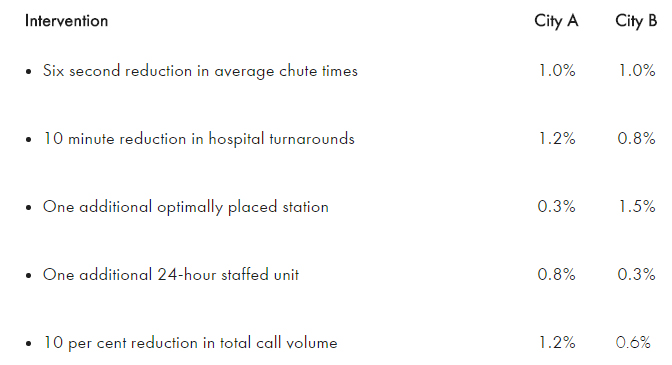In well-run services, fractile performance improvements do not come cheaply. A one per cent gain in an eight or nine minute response target may cost millions of dollars. Moreover, it is rarely clear where that money should best be spent. The first step is to recognize and understand the wide range of interventions and investments available, and then to evaluate the benefits of each.
We have categorized a number of performance issues into the following groupings:

Some of these issues can be addressed quickly and inexpensively, whereas others are difficult to even influence. By using something similar to the above table, you can get a better sense of the breadth of interventions (keeping in mind that this is only a subset), and you can be more creative in your approach to performance improvement.
The results are often surprising
Below are two nearly identical cities, but with very different cost-benefit profiles. Let’s look at how their performance improvements vary.

As you can see, the best interventions in City A revolve around unit availability (e.g. hospital times, units on the street). Conversely, improvements in City B are highest from adding stations.
The ability to compare the benefits of various interventions is crucial in making sound investment decisions.


